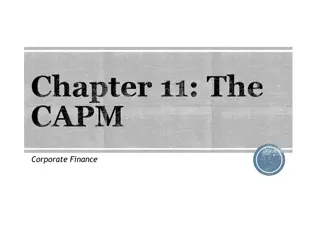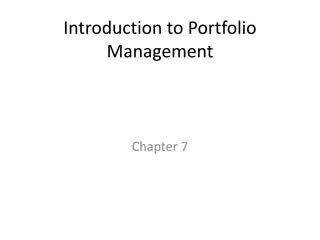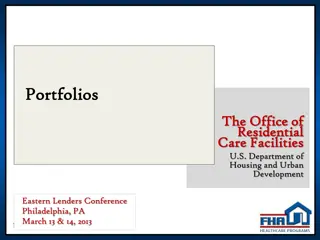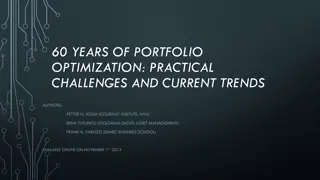
Software Project Management Program Overview
Explore the significance of program management in software project management, learn about managing aggregates of projects and assets, and understand the benefits and necessity of program management in handling complex and diverse projects within an organization.
Download Presentation

Please find below an Image/Link to download the presentation.
The content on the website is provided AS IS for your information and personal use only. It may not be sold, licensed, or shared on other websites without obtaining consent from the author. If you encounter any issues during the download, it is possible that the publisher has removed the file from their server.
You are allowed to download the files provided on this website for personal or commercial use, subject to the condition that they are used lawfully. All files are the property of their respective owners.
The content on the website is provided AS IS for your information and personal use only. It may not be sold, licensed, or shared on other websites without obtaining consent from the author.
E N D
Presentation Transcript
CSSE579 Session 6 Part 3 CSSE 579 Software Project Management: Program, & Portfolio Management Old School Steve Chenoweth Rose-Hulman With helpful materials provided by Shawn Bohner
Course Learning Outcome: Progress Explain program and portfolio concepts as they pertain to managing aggregates of software projects and assets.
Context for Classic Program Management Corporate Business Drivers Project Progress, Recommended Actions Operate Business Program/ Project Progress Manage Program(s) (Portfolio of Projects) Delivered Projects (Successful) Program Needs, CSFs PM Policies Plan Templates, Mngt. Constraints PMO/Project, Trained PMs PM Tools Manage Projects Develop PMs Project Requirements PMO/Project, Trained PMs, PM Tools
Why do we need Program Management? Manage the range of projects in an organization Manage the volume of projects in an organization Size/Scale Complexity (e.g., sophistication) Distributedness (e.g., Global teams) Manage Value Risks Investments Small Project Person Project Large Project Program
Group Exercise: Be Program Managers Make this simple -- You have: 12 projects with varying team configurations 12 different clients with varying expectations and sophistication Project deliverables all due at the same time Team members will change Clients may change Quality must be maintained/rewarded Team members must learn (be trained) How would you organize for all of this?
Classic: Program Management Organization Project Office Layer of management to provide support and coordinate teams Temporary structure for big projects Core Team Similar to the PO, but it has an advisory committee Subject matter experts work with teams as advisors Super Team Integrate various teams into a huge super team Divide them into groups to focus on particular aspects
Program Management is needed if Project failure rates are too high Training is not producing results Project staff planning isn t effective Inability to leverage best practices Lack of control over the project portfolio Inconsistency in project reporting Too many resource scheduling conflicts Gap between process and practice
PMO Capability Maturity Model (SEI) Maturity Level Key Process Area Concentrations Strategic Inflection Point Integration with Business Effective Span Result Value Value Management, Business Continuity Planning, Procurement Management, Outsourcing and Contract Management, PM Center of Excellence Program Process Management, Project Integration Management, Project performance Management, Vendor Management, PM Career Path, Staff Performance Management, Customer Relationship Management, Contingency Management, Communications Management PM Methodology, PM Training, Change Management, Staff Resource Management, Environment Resource Management, Conflict/Issue Management Planning, Tracking, Schedule Management, Budget/Cost Management, Scope Management, Progress Reporting Acquiring New PMs Enterprise / Industry 5 Incorporated Dynamic Micro-Level Change Multiple Business Units 4 Managed Skills Management, Risk Management, Static Macro-Level Change Multiple Project 3 Defined Estimation, Risk Identification, Stabilize Performance Single Project 2 Stable Risk 1 - Initial Source: Bohner 1998
Dilbert on Managing the Project Portfolio
Perception of Software System Value Efficiency Effectiveness Business Risk Business Value Cost Investment High Recognized Dependency on Information or Service Business Cost Business Opportunity Low Low High Perceived Capability of Software to Deliver Information or Service Source: META Group
Software as Assets in a Portfolio Management Ecosystem Enterprise Priorities Project Proposals Adjust Project Portfolio Identify Asset Improvements Asset Retirement Manage Portfolio Execution Project Portfolio Management Asset Portfolio Management Assess Value Manage Asset Usage Implement Projects/ Programs Assess Value New/Modified Assets Operational Process Program Management Process Source: META Group
Software Portfolio Analysis New Excellent Development Re-evaluate/ Reposition Asset Technical Condition Maintain/ Evolve Asset Is this like the MIT version of portfolios that you looked over? Reengineer / Modernize Asset Retire/ Consolidate Asset Poor Low High Business Value
Software Portfolio Planning Year 4 Year 3 Year 2 Excellent Re-evaluate/ Reposition Asset Technical Condition Maintain/ Evolve Asset Reengineer / Modernize Asset Retire/ Consolidate Asset Poor Low High Business Value
Group Exercise: Lets play you bet your job! You have 3 Software Assets 1. Old system with lots of quality and maintainability issues. Client is highly dependent on this system 2. 3 year old system with lots of changes coming in from an important customer. 3. New project to produce a key system for an emerging customer-base Place each of these on the quadrant chart. How can you quantifiably justifying your choices?
Project Prioritization Approaches Non-Quantitative Forced Ranking Q-Sort Must Do Should Do - Postpone Growth OR Quantitative Criteria Weighting Paired Comparison Risk/Benefit Survival
Forced Ranking 6 (A-F) Team members rank 10 projects
Pragmatic: Must Do - Should Do - Postpone SELECT Graham-Englund Model
Scoring Model: Criteria Weighting Project #7
Scoring Model: Risk/Benefit Fund Consider Don t fund
Some general lessons about this Not all the old school ways of handling programs and portfolios are bad. There may be some work to be done making things lean or agile at this higher level. Meantime, our Agile projects need to play ball with the different ways these managers perceive things. And, there may be differences we can t get rid of like the managers penchant for reducing everything to savings and profits!






















